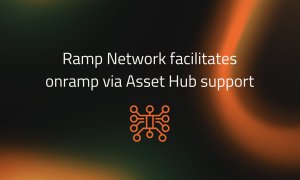Avalanche’s Fast Growth Challenges Ethereum’s Long Standing DeFi Dominance
The crypto ecosystem has fast burgeoned into a $3 trillion market cap, with more projects launching by the day. In recent months, this growing industry has also seen exciting developments as new Layer-1 chains emerged to challenge Ethereum’s dominance. One of the biggest challengers is the Avalanche blockchain; a smart contract focused Layer-1 chain built to support Dapp and NFT development.

The Avalanche ecosystem has grown to host over 320 Dapps within the past year, while the value of its native coin AVAX skyrocketed by over 2,000% to hit $94 as of press time. It is currently the 12th largest coin in market capitalization, according to Coingecko metrics. Well, the good news is that the momentum seems to be just getting started; die-hard Avalanche enthusiasts are optimistic that it could be the ‘Ethereum killer’.
Before jumping into the speculation bandwagon, it is fundamental to understand why Avalanche has been successful so far. This growing Layer-1 chain is an initiative of Ava Labs and Professor Emin Gün Sirer, a Cornell computer science associate professor. With three years of existence, the project has raised a total funding of $290 million led by famous crypto investors, including Three Arrows Capital and Polychain.
That said, Avalanche’s main value proposition lies in the fundamental architecture of its blockchain network. This Layer-1 chain eliminates the shortcomings of Ethereum’s ecosystem by offering users a fast and cheap operating environment. Avalanche touts 4,500 transactions per second (tps) compared to Ethereum’s 15-30 tps. Additionally, the transaction finality on Avalanche takes three seconds, while Ethereum’s could take over a minute.
A Cheaper Dapp Ecosystem
As far as Dapp development goes, Ethereum has been the ultimate Layer-1 chain. However, the ever-increasing gas fee on this blockchain is a significant limiting factor to crypto innovators and developers. Avalanche changes this narrative through its cost-friendly ecosystem where transactions cost as little as 75 nAVAX – 225 nAVAX ($0.000006097 & $0.00001829 as per the prevailing prices).
Unlike Ethereum, which runs on one-chain, Avalanche’s blockchain infrastructure comprises three integrated chains: The Exchange Chain (X-chain), Contract Chain (C-chain) and Platform Chain (P-chain). These chains perform different roles with the X-chain supporting creation and exchange of crypto assets. The C-chain facilitates smart contract creation while the P-chain coordinates network validation through subnets.
Given this architecture, it is no surprise that the Avalanche blockchain has managed to deliver a fast and cheap Dapp building ecosystem. Some of the upcoming Dapps building on this network include Pangolin, a decentralized exchange (DEX) leveraging Avalanche’s fundamentals to introduce a fast and cheap crypto trading environment. Thanks to Avalanche’s Ethereum bridge, users can also trade ERC-20 tokens on the Pangolin DEX.
Newsletter #22 is out! Don’t forget to subscribe to get the news immediately.
Highlights this week:
?Leading APRs for high liquidity pairs
?ORBS Pool went live @orbs_network
❄️SnowTrace IntegrationAnd MANY partnership + Interviews #AVAX #PangolinDEXhttps://t.co/tyZumkuu4m
— Pangolin ? (@pangolindex) November 6, 2021
While Pangolin uses the same automated market maker model (AMM) as Uniswap, the DEX sets itself apart by allowing more retail users to deploy smart contracts or trade crypto assets. Swapping tokens on this DEX only costs a few cents coupled with a sub-second transaction finality. Pangolin’s 100% community-driven native token (PNG) is the platform’s governance tool, allowing the community to vote on development proposals.
This DEX is just one of the few Dapp examples that are building on Avalanche. Other prominent DeFi protocols include Trader Joe, Benqi, Abracadabra and Anyswap. It is also noteworthy that Ethereum natives Aave and Curve Finance launched their protocols on Avalanche following a $180 million liquidity mining program incentive back in August.
Is Avalanche the Future of Layer-1 Chains?
The debate on the future of Layer-1 chains has been going on for some months as Ethereum lags in its 2.0 upgrade. This being the case, the likes of Avalanche and Solana are gradually attracting more capital within their ecosystems. As it stands, over $9.5 billion is locked on Avalanche Dapps, according to DeFi Llama. This value has tripled within the past three months, a sign that Avalanche’s ecosystem is on steroid growth.
Besides DeFi protocols, NFT platforms are also building on Avalanche. Some notable projects include Spores, a cross-chain NFT platform that supports Binance Smart Chain (BSC). This NFT platform and other innovations go on to show a growing interest in Avalanche, not to mention AVAX’s recent surge in price.
The Avalanche foundation has also been making great strides to position the network as a futuristic Layer-1 chain. Just recently, they launched a $220 million DeFi and NFT growth fund dubbed Blizzard to bootstrap more innovation. Ava Labs president John Wu believes that the initiative will go a long way in incentivizing Dapp development on Avalanche,
“Blizzard is entering the Avalanche community at a pivotal moment, where this influx of users and activity demands constant innovation in new applications and use cases on the platform.”
“This is a massive step in the maturation of the Avalanche ecosystem and its support system for builders developing the future of this industry,” added Wu.
Going by this momentum, it is evident that Avalanche might soon be giving Ethereum stakeholders a run for their money. However, it would also be ignorant to ignore Ethereum’s dominance and reputation as the pioneer Layer-1 to support Dapp building. Only the future can unfold whether we have an ‘Ethereum killer’ or the industry will evolve into one ecosystem where multiple blockchains can communicate.









